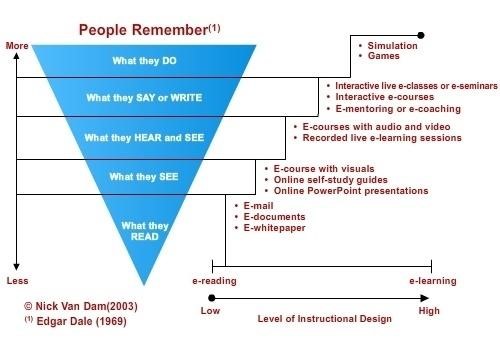Making learning more fun and entertaining leads to much better engagement and knowledge retention. This is why educators are increasingly implementing gamification into their learning programs, be they classroom-based or online.
Gamification means adding game-design elements to learning. Those include points, badges, levels, leaderboards, and even simulations that are just like video games.
According to an experimental study on gamification and its effects on psychological needs satisfaction, gamification can be a very powerful motivator in learning programs, as long as they are properly designed and implemented.
Why Is Gamification Beneficial to Learners?

Many educators still resist applying gamification to learning, mainly because they believe it can negatively affect the learners’ intrinsic motivation.
The truth is that learners respond quite positively to gamified learning programs. They feel competitive and are motivated to push harder to receive recognition and rewards, just like they do when playing games.
Since they work harder, they essentially learn more. They also retain all the information much faster because they don’t feel like they’re actually learning.
The Science Behind Gamification
Yes, there’s actual science behind gamification that shows why the method works.
When you’re playing a game, your mind is stimulated to keep going until you receive a particular reward, such as moving on to the next level. That kind of stimulation makes your body release endorphins, one of the so-called happy hormone.
So, when a student engages in gamified learning, they’re happier and have more fun. They don’t feel like they’re actually learning – they feel like they’re playing a game.
This makes them quickly retain much more information than they normally would. And that’s precisely why you should implement gamification into your learning programs.
Take a look at a diagram showing various methods for learning and how they impact knowledge retention, published in the “Uses of the Virtual World for Educational Purposes” study.

Notice where gamification is in relation to knowledge retention? Right at the top, being one of the few methods that enhance learning the most.
How Can You Apply Gamification to Learning?
![]()
Applying gamification to learning is actually very easy. To get the most out of it, you either need to create an online learning course first or utilize tools for implementing game-design elements into the classroom.
With that in mind, take a look at the essential steps you should take to effectively apply gamification to learning.
- Use Experience Points Instead of Grades
When you give your students grades, not everyone is always satisfied with their achievement. Those who aren’t the best in class often feel disappointed and unmotivated to push harder.
Giving your learners experience points instead keeps them engaged and motivates them more because the only way to go is up. They’ll try to get more and more points to get to the top, so they’ll study more and retain much more information.
- Add Skill Levels, Badges, and Progress Bars
Quite similarly, adding skill levels, progress bars, and badges will also motivate your learners. Every time they move on to the next level and get a new badge, they’ll get an invaluable sense of achievement.
Displaying a progress bar for each learner will additionally stimulate them to keep learning and honing their skills. Giving them a visual representation of their overall progress will help them see exactly where they are at any point of your learning course.
- Use Leaderboards to Evoke Friendly Competition
Leaderboards are a great visual representation of your learners’ progress. However, they’re also ideal for stirring up some friendly competition among your learners.
Evoking competition is perfect for incentivizing them to stay engaged in the learning course and practice more.
You can create a visual leaderboard with a list of all your learners and their experience points for each assignment, as well as their bonus points and achievement badges. Enable them to access it anytime, so that they can clearly see which areas they may need to focus more to earn more points.
- Provide Engaging Simulations
Simulations are very effective for better knowledge retention, as you could see in the diagram above. They’re just like video games, so they make learning more fun and engaging.
This is why you should provide your learners with entertaining simulations that will help them better grasp various concepts from the learning material. You can also add branching scenarios so that your students can control all the choices they make and effectively learn from them.
- Create Fun Quizzes
Quizzes are fun by definition, but how can they help in education? They’re perfect for revision, so you should make a quiz for each learning session. That way, you can help your learners evaluate what they’ve learned and also help increase their knowledge retention.
You should also make a quiz for assessing your learners. Online exam software can help you create quizzes and track your learners’ progress. It will provide you with insightful reports and analytics so that you can know all the strengths and weaknesses of each student and improve the effectiveness of your course.
With online exam software, you can also create and grade exams, so that’s another reason to utilize it.
Key Takeaways
Adding engagement, competition, and entertainment to learning is one of the best steps you can take to enhance the learning experience.
If you want to transform your learning courses and help your learners retain knowledge faster and easier, start enhancing your courses with gamification right now. You’ll motivate your learners to push harder, and keep them engaged throughout your every course.

Author Bio: Kamy Anderson is an ed-tech enthusiast with a passion for writing on emerging technologies in the areas of corporate training and education. He is an expert in learning management system & eLearning authoring tools – currently associated with ProProfs Training Maker.

